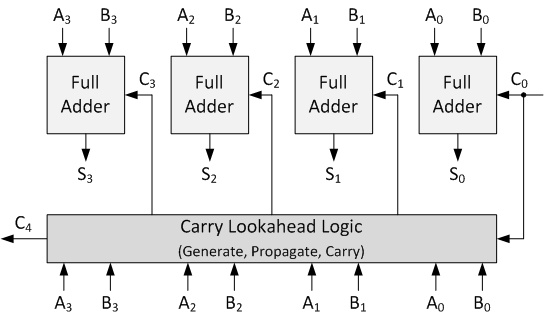Stochastic modeling of mushroom—waveguide photodetectors
Waveguide photodetectors (WGPDs) are one of the promising candidates to solve the tradeoff between the quantum efficiency and the transit time in the surface illuminated photodiodes where the lightwave is incident laterally perpendicular to the direction of the flow of generated carriers, enhancing both high speed and quantum efficiency. In Mushroom-WGPDs, the performance degradation due its parasitic capacitance and the load resistance is overcome due to the mesa mushroom structure. Inaccuracies in the dimensions of’Mushroom-WGPDs due to the fabrication affect its functionality and its

Multiple Pinch-Off Points in Memristive Equations: Analysis and Experiments
Pinched hysteresis behavior is considered evidence of the existence of the memristive element. Recently, the multi-lobes (more than two) behavior has been discovered in some memristive devices. In this paper, a fractional-order flux/voltage-controlled memristive model is introduced that is able to develop multiple symmetric and asymmetric pinch-off points. Generalized closed-form expressions for the necessary conditions of multiple pinch-off points existence are derived in addition to the coordinates of the pinch-off points in the I-V plane. Closed-form expressions for the minimum and maximum

Supercapacitor reciprocity and response to linear current and voltage ramps
The focus in supercapacitor research typically falls into one of two categories: (i) the rational design and engineering of electrode materials and electrolyte formulation to achieve high performance devices at competitive costs, and (ii) the modeling of their resulting behavior in response to constant-current charging/discharging, cyclic voltammetry or impedance spectroscopy. However, less work has been dedicated to new ways for charging these devices. In this work we show that charging a supercapacitor, modeled as a constant phase element with a series resistor, using a linear voltage ramp

N-digits ternary carry lookahead adder design
Carry lookahead adders (CLAs) are extensively used in digital circuits due to their logarithmic computational time (O(log n)) compared to linear computational time(O(n)) in the ripple carry adders. In this paper, two design approaches for N-digits ternary logic CLA based on K-map and threshold logic methods are proposed in addtion to their realization using CNTFETs only and memristor with CNTFETs. Finally, 4-bit ternary CLA is presented. A comparison and tradeoffs among the proposed designs are presented in terms of the delay and the area. The comparison shows that the transistor-only-based
Supercapacitor discharge under constant resistance, constant current and constant power loads
Supercapacitors, which are now widely used as power sources in various applications, are discharged with one of the following three basic discharge modes: a constant current load, a constant resistance load or a constant power load. A constant current load is one which varies its internal resistance to achieve a constant current regardless of the applied voltage. For the constant resistance case, it results in a change of power as the voltage level changes. And for a constant power load, the load varies its impedance as the input voltage changes in order to keep the power constant. However

Multiplierless chaotic Pseudo random number generators
This paper presents a multiplierless based FPGA implementation for six different chaotic Pseudo Random Number Generators (PRNGs) that are based on: Chua, modified Lorenz, modified Rössler, Frequency Dependent Negative Resistor (FDNR) oscillator, and other two systems that are modelled using the simple jerk equation. These chosen systems can be employed in high speed applications because they don't utilize any hardware multiplier. The proposed PRNGs have been implemented using VHDL, synthesized on Xilinx, using the FPGA: XC5VLX50T, and tested using the NIST statistical suite. Furthermore, a
Supercapacitor Fractional-Order Model Discharging from Polynomial Time-Varying Currents
Fractional-order models of supercapacitors are advantageous in that they have fewer terms, offering simpler expressions to accurately describe the transient characteristics of these devices than integer-order models. When evaluating the discharge characteristics of supercapacitors, a constant current is often considered which does necessarily represent real-world applications. In this work, the voltage discharging expressions of a fractional-order model of a supercapacitor to time-varying polynomial discharging currents are presented using simulations to highlight the different cases. In

Multi-switching master–slave synchronization of non-identical chaotic systems
This paper investigates the multi-switching master–slave synchronization of non-identical chaotic systems in which state variables of a master system are synchronized with different state variables of a slave system using the sliding mode control technique. To design the appropriate controllers via sliding mode control for different switches, Lyapunov stability theory is taken into account. Theoretical results are applied by considering two non-identical chaotic systems where one is considered as master system and another is considered as slave system. Numerical simulations are performed to

Multiswitching synchronization of commensurate fractional order hyperchaotic systems via active control
In this chapter, the multiswitching synchronization scheme has been investigated for a class of nonidentical fractional order hyperchaotic systems. The multiswitching complete synchronization scheme has been examined such that the state variables of the slave system synchronize with different state variables of the master system. For the synchronization of two nonidentical fractional order hyperchaotic systems suitable controllers have been designed using active control technique. The stability of fractional order chaotic systems has been used to stabilize the error dynamical system. Two
New Control Schemes for Fractional Chaos Synchronization
Chaos theory deals with the behavior of dynamical systems that are highly sensitive to initial conditions. Chaotic systems are characterized by the property that small changes in the initial conditions result in widely diverging responses. In this paper, new control schemes of synchronization for different arbitrary incommensurate and commensurate fractional order chaotic systems are presented. Synchronization stability, based on stability of linear fractional-order systems and fractional Lyapunov stability, is proved theoretically. Numerical examples are given to show the effectiveness of the
Pagination
- Previous page ‹‹
- Page 10
- Next page ››
